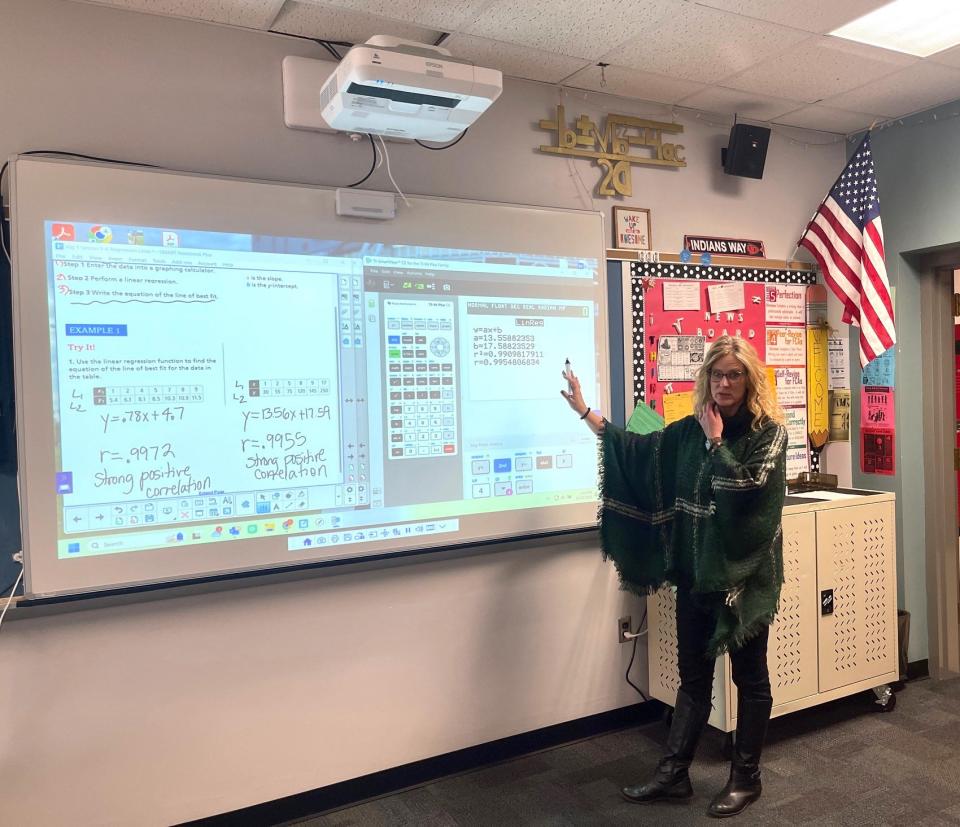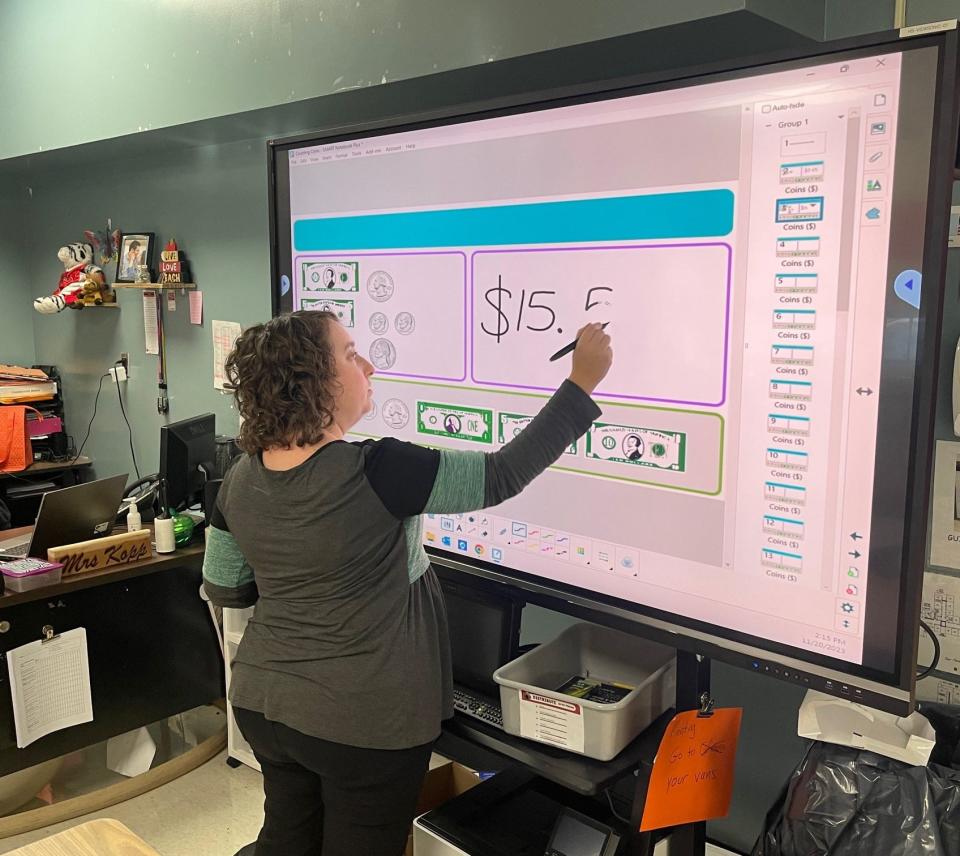How Conemaugh Township received a nearly $1 million grant for new classroom technology
DAVIDSVILLE ― The Conemaugh Township Area School District is about to merge, at full speed, onto the education superhighway.
In November, the U.S. Department of Agriculture Rural Development (USDA) awarded a $942,000 Distance Learning and Telemedicine (DLT) grant to the school district to upgrade its classroom technology at the middle/high school.
More CT news: What is the CT Boutique at Conemaugh Twp. Area Middle/High School?
The DLT grant program “helps rural communities use advanced telecommunications technology to connect to each other – and the world – overcoming the effects of remoteness and low population density,” according to a fact sheet produced by the USDA. Organizations in rural areas with populations of 20,000 people or less are eligible for the grant.
Bringing the world into each classroom
Combined with a $142,006 (15%) funding match provided by the school district, just over $1 million will be spent this year at the middle/high school building to outfit 37 classrooms with new educational technology, including laptops, monitors, whiteboards, projection equipment, microphones and other auxiliary equipment.
“Now there are classrooms, like obviously gym class, where this isn’t applicable, but we are receiving 37 laptops and a total of 37 Epson interactive projectors and ViewSonics (interactive display monitors),” Superintendent Nicole Dull said.

The school’s auditorium will also be outfitted with new projectors, a projection screen, audio equipment and accessories, which will allow it to serve as a large group instruction room.
This new technology provides even more opportunities for Conemaugh Township’s 498 middle/high school students to learn about the world around them – to study languages, science, art and more – through virtual “visits” from their own classrooms. In addition, the district’s current partnerships with other education providers like the Greater Johnstown Career & Technology Center, Appalachia Intermediate Unit 8, Pennsylvania Highlands Community College, St. Francis University and the University of Pittsburgh at Johnstown will grow, bringing new opportunities for students and staff to participate in distance learning, administrators said.
“We hope to use it with our students and our staff, for professional learning opportunities where we can connect with other educators across the state or across the country, across the world for that matter,” said Stacy Dabbs, the district’s director of curriculum and instruction.
“When we took a look at this grant, this gave us the opportunity to not just get the classroom projector, the interactive whiteboard and laptops for our teachers, but this also gave us the ability to add in Poly Studio, which is the sound enhancer, the microphone, those types of things, so that you could interact virtually with someone and it’s like they’re here because there’s not that lull in time, there’s no sound dropping.”
Dull added, “We’re giving students an opportunity to see outside their world. You can’t expect a student to say ‘I want to become an oceanographer’ if they’ve never seen the ocean or been to the ocean or talked with an oceanographer. And how do you get those opportunities? You learn them through media, or you learn them through distance learning. So, we’ve realized that here in rural Pennsylvania, we need to bring those opportunities to our students.”
Supporting students' physical and mental health
Two telemedicine carts are included in the technology grant as well; these will be used by the district’s two school nurses (one at the middle/high school and one at the elementary school) and other trained staff to respond when a student has a physical or mental health need.
“Post-COVID has brought about an increase in mental health awareness and also in remedying those who are experiencing mental health issues,” said James Foster, middle/high school principal. “We have our own in-house mental health support in REACH (a local, nonprofit mental health counseling agency); however, we do have students that utilize different avenues whenever it comes down to mental health services.
“This will open up a new door for us in (that) those students will now have access to those individuals when needed.”
Signs of Spring: Somerset County Blooms of Hope set for 2024
Staff training on the new technology, as well as maintenance and a three-year warranty, were also factored into the project's overall cost, Dull said.
Dabbs added, “A big part of the grant is professional development for using these items, so there will be a number of people who will need to be trained to use (for example) that telehealth cart.
“Of course, for our teachers, this is brand new technology for them so (they’ll learn) how they would use that in the classroom and down in the auditorium. That’s going to be a whole different ball game because it is state-of-the-art (equipment). So we’re going to have to learn to use some things that we’ve not seen before.”

Meeting students' needs in a 'technology-driven world'
The administrators said the unexpected challenges of educating students at the onset of the COVID-19 pandemic in 2020 brought the need for technology improvements in the district to the forefront, and receiving this grant has allowed those improvements to take place sooner and on a larger scale.
“We wouldn’t have been able to do this all at once, not this size of a project,” Foster said. “The nice thing is how (the grant) reflects back to the taxpayers, because the people who sit around these (conference room) tables take a lot of pride in saving money for the taxpayers. This (project) is something we would have needed to do down the road, budget for, probably incrementally, and now we have the opportunity with this grant to reallocate those funds as time goes on towards the next needs, without hindering the school district in any way, shape or form for its constituents.”
That’s not to say that the application process was easy, Dull said, as the district had just 60 days to pull together the information needed to submit its grant proposal to the USDA in January 2023. A group of 11 administrators and staff, including Dabbs, Dull and Foster, put in over 360 hours and held more than 24 meetings to compile all the documents needed for the grant application.
“We did a staff survey to see what our needs were, we created a budget, we had technology design meetings, we consulted with some specialists, we had to reach out for letters of support from parents, teachers, higher education, businesses, legislators and museums,” Dull said. “We had to update our resumes and submit our resumes, and then we had to write these very long grant narratives. Between all of us, it was about 360 hours of work in 60 days.”
The grant was also submitted and approved during Dull’s first year as superintendent of the school district.
“It makes me very proud that I was able to guide our team, we worked so well together to get input from our teachers, look at our needs,” she said. “It was grueling – I'm telling you, that application is robust, it is not small. We just always keep the needs of our kids and the needs of our teachers at the forefront, and we need to plan for the future right now. This has helped me to start to lay some of the groundwork for where I want to take the district in the next 10 years, with the support of my administrative team.”
Teacher honored: Unsung Heroes: Why this Shanksville-Stonycreek Elementary teacher was honored by the Fred Rogers Institute
Moving forward and future plans
In-Shore Technologies in Johnstown, the district’s technology consultant, put together the list of equipment that the district needed to purchase, “down to every cable,” Dull said.
The various pieces of equipment are now being ordered and Dull said the district hopes to have most of it installed in the next six months.
“There are some things that we need to hold off on until the kids are not here. But definitely by July 1, we hope to have everything up and running,” she said. “Our technology consultant company is fantastic, they work evenings, they work around our kids and our activities so they can get things in.”
The district plans to submit a second grant proposal to the USDA in the future, to outfit classrooms in the elementary school with similar technology, Dull said. There are 383 students currently enrolled at the elementary school.
“Some of the technology pieces that we currently have (at the middle/high school) will be moved down to the elementary, so they are still benefitting,” she said. “And when the next round comes open, we will apply again with the intention of putting similar things in the elementary school. We definitely want to mimic what we are getting here down at the elementary school.
“It is a simple tool, and the teacher that you have in that room is the most important piece, but this is the icing on the cake. This is one of the tools that (the teachers) utilized to share their content with our kids and to reach them. We are in a tech-driven world, so COVID taught us the traditional classroom is not what the future is going to be like and we need to be ready to respond if we were ever put into the situation (that) we were during COVID. If we are, now we will be 100% ready.”
Foster added, “It will be exciting to see where everything goes. We’ve been fortunate enough here that the Pittsburgh Business Times had our school district ranked as a Top 50 performing school district in the state of Pennsylvania. At U.S. News & World Report, our middle school was 43rd in the state of PA. Our elementary school has a high ranking (63rd), so bringing these extra tools in to enhance education should only provide more unique opportunities for our students to grow.
“So we’ve got a lot of great things happening in Conemaugh Township, and we’re only hoping for it to get bigger and better.”
This article originally appeared on The Daily American: Conemaugh Township gets nearly $1 million from USDA for new classroom technology

